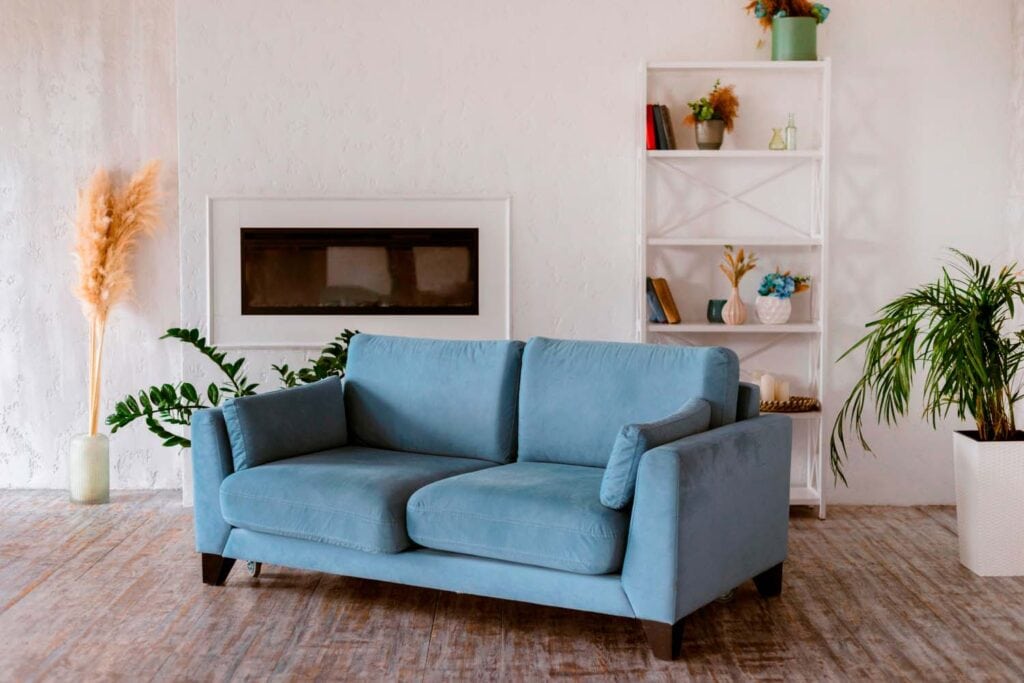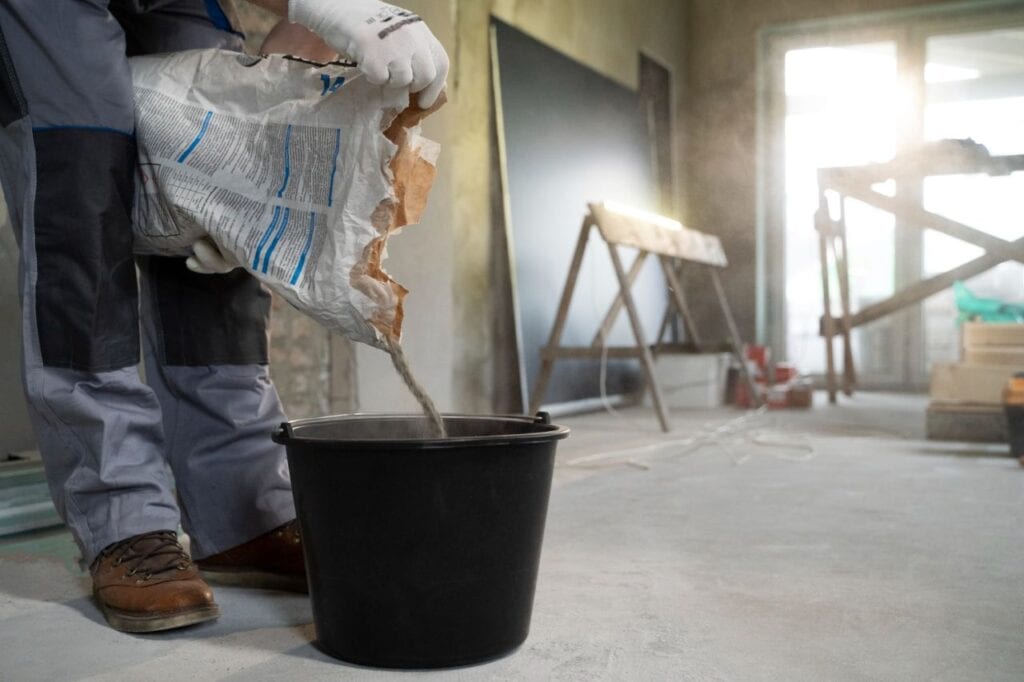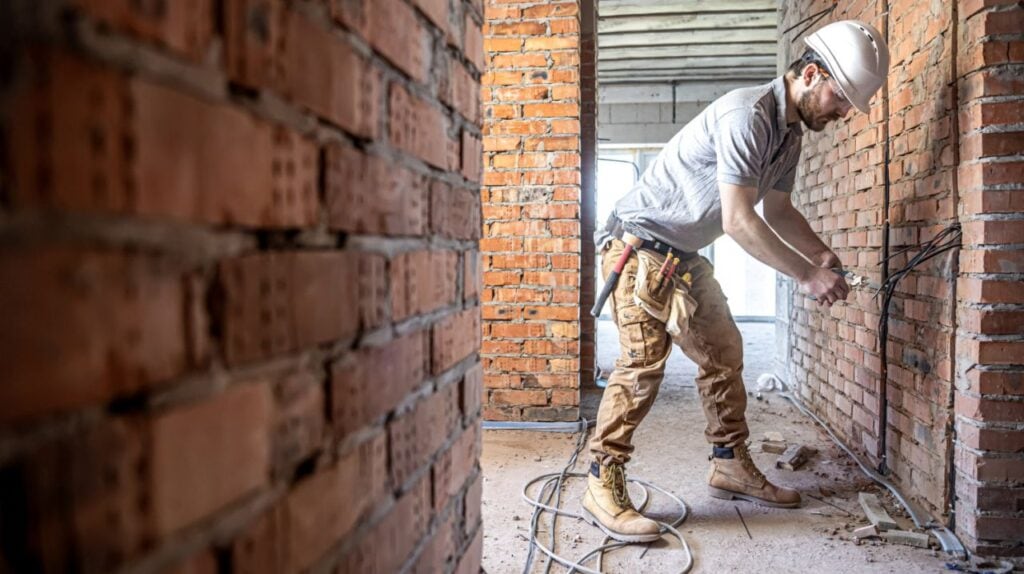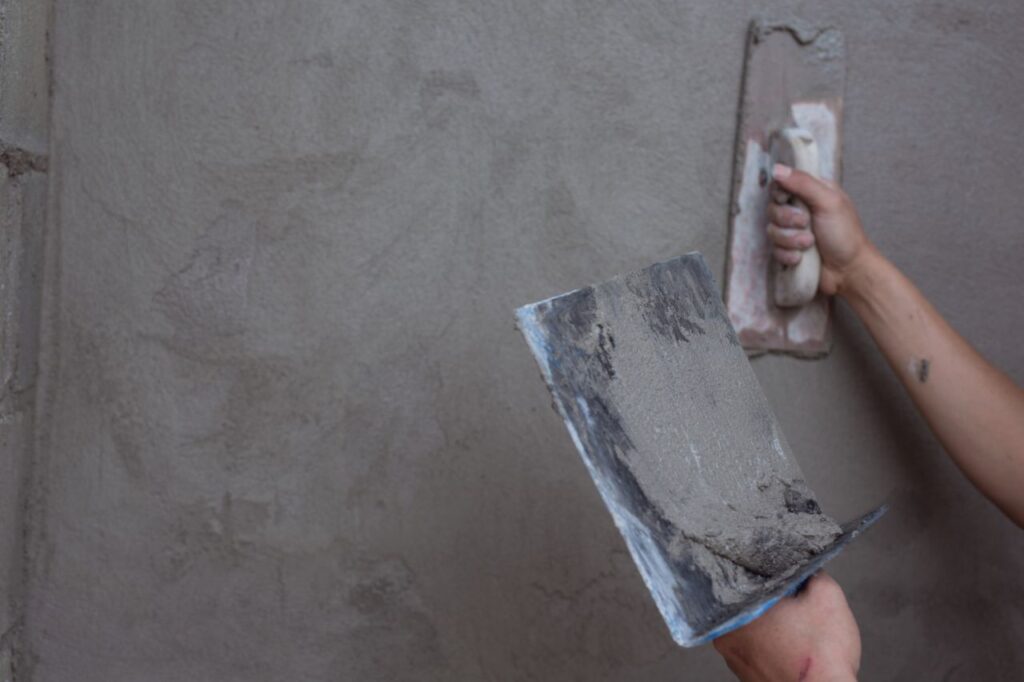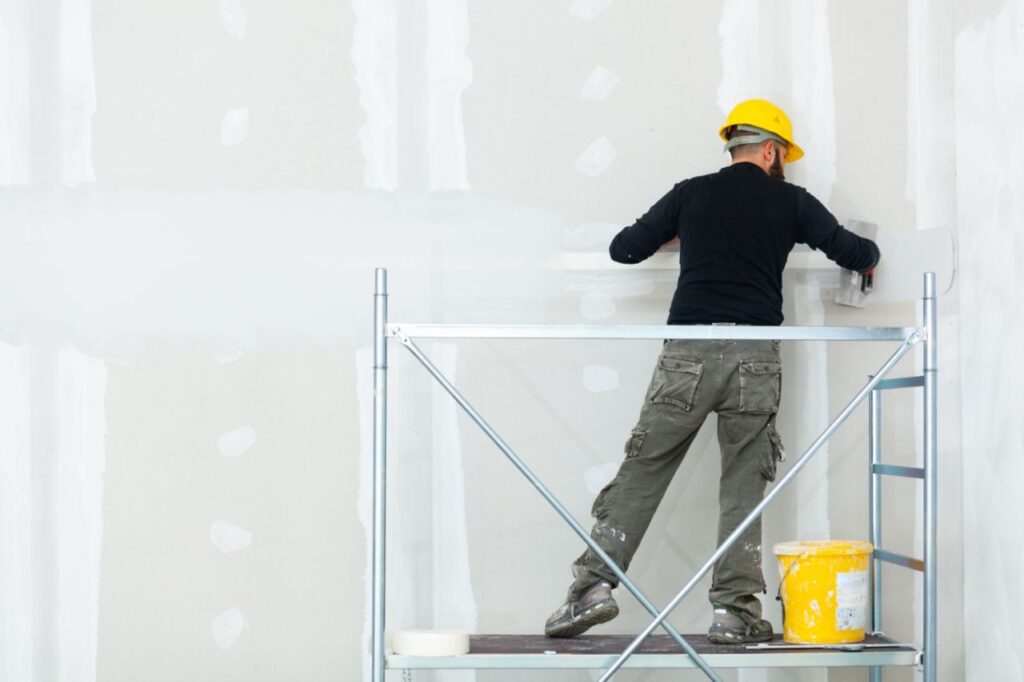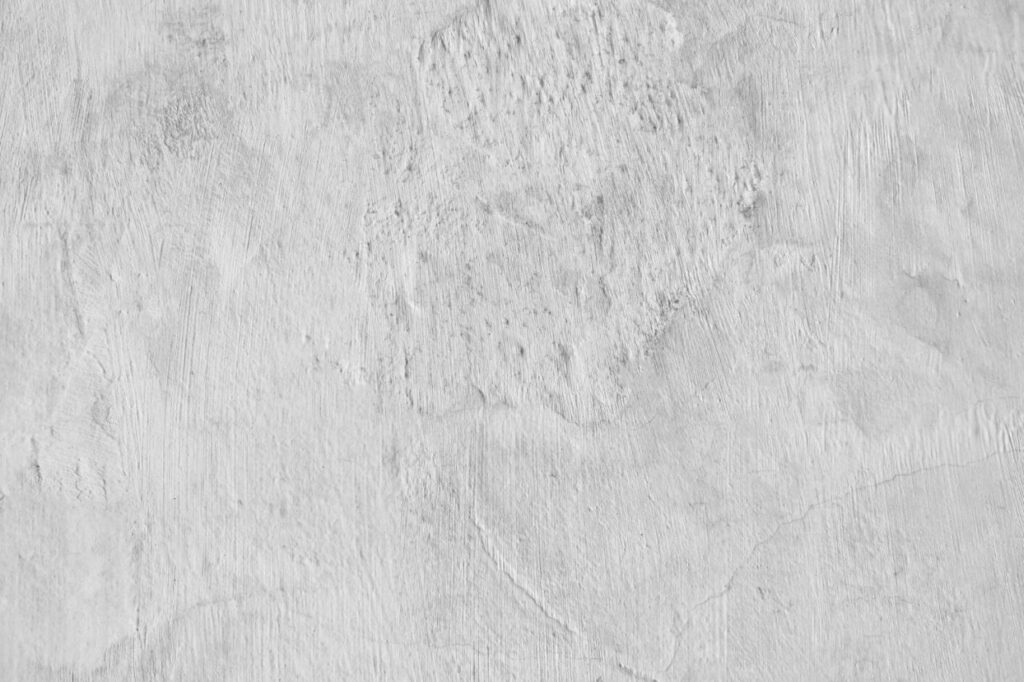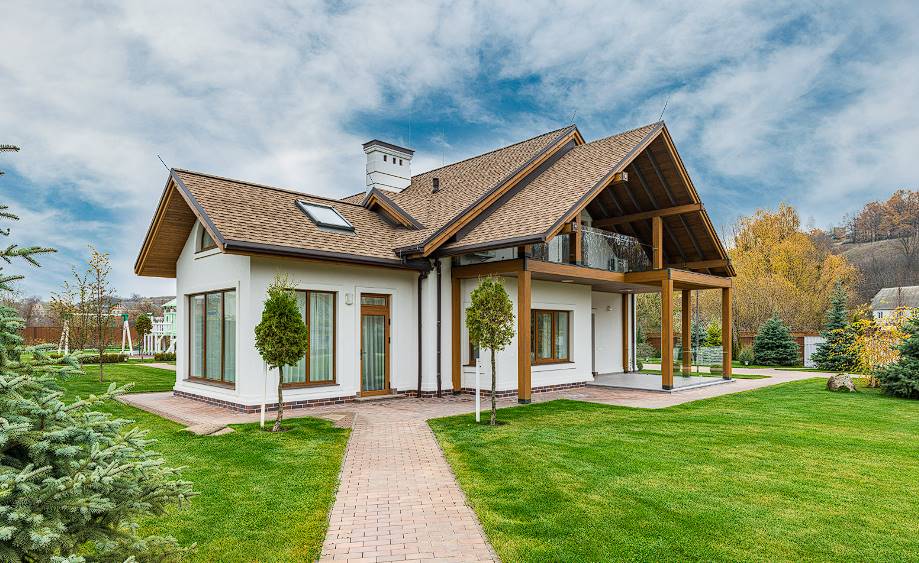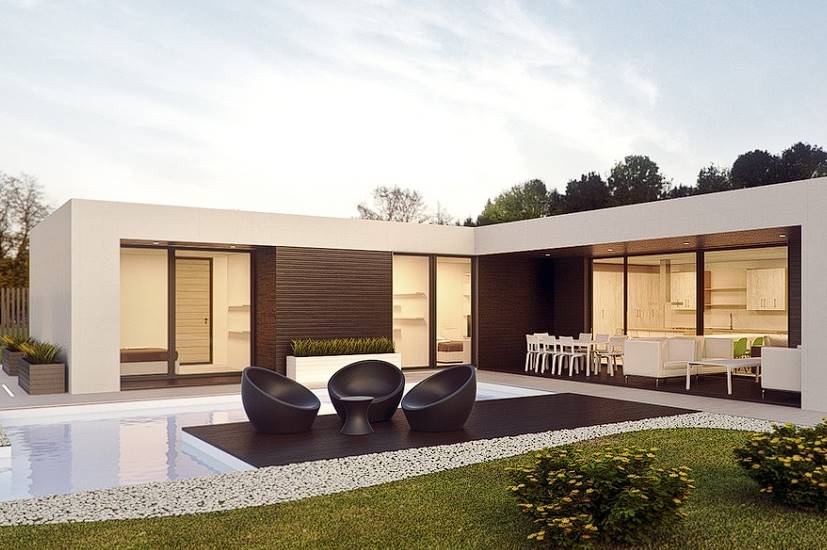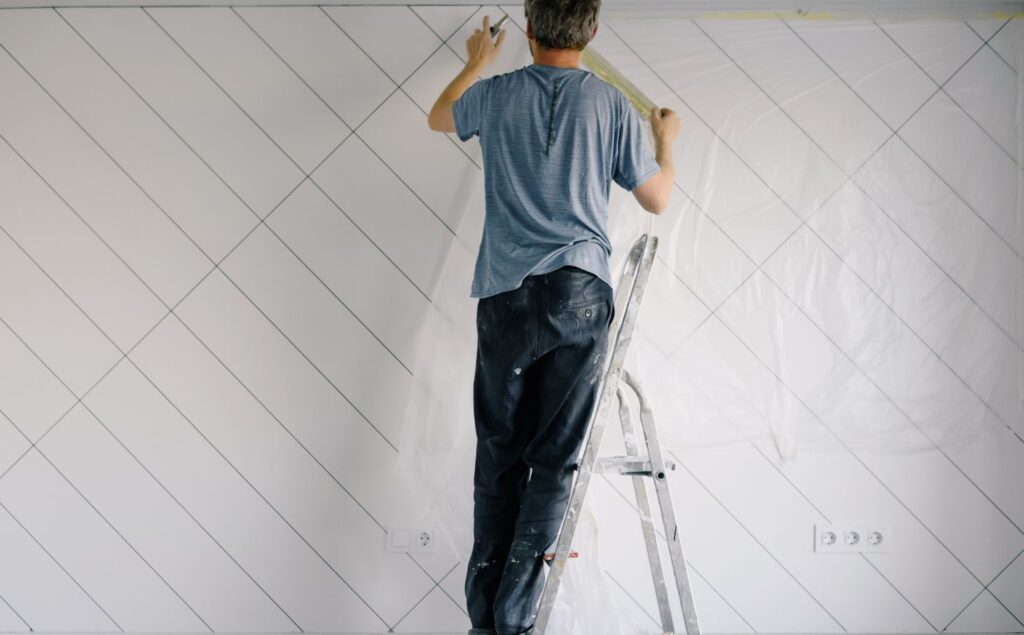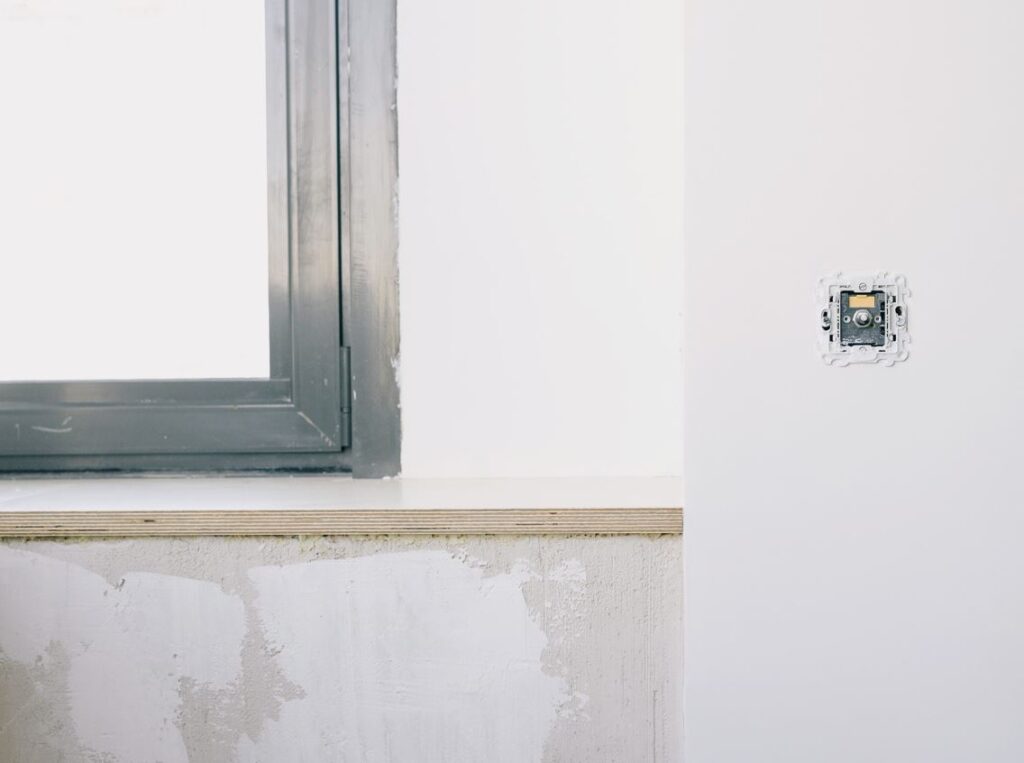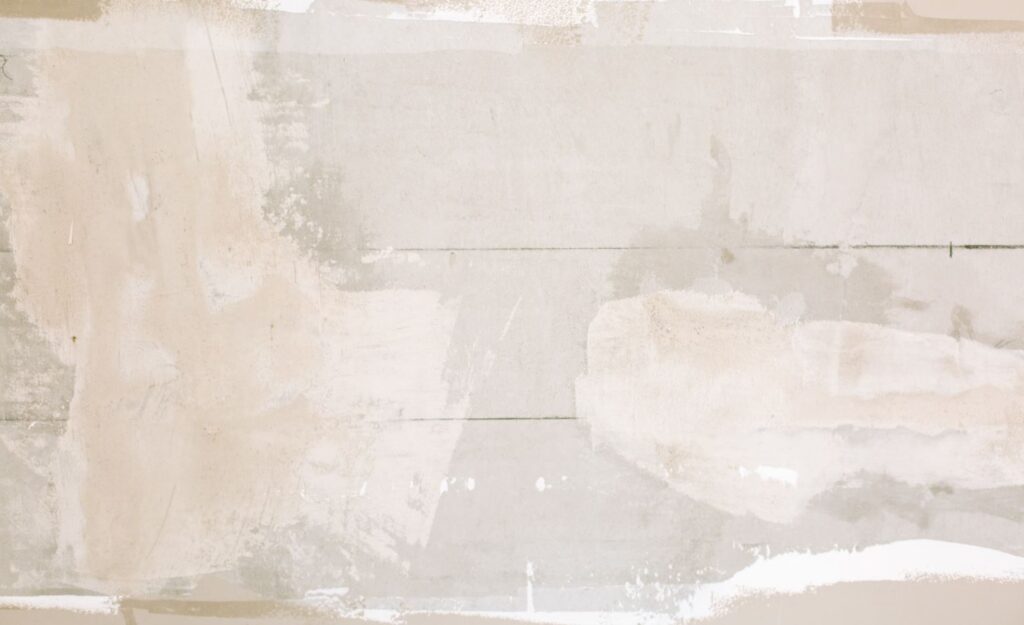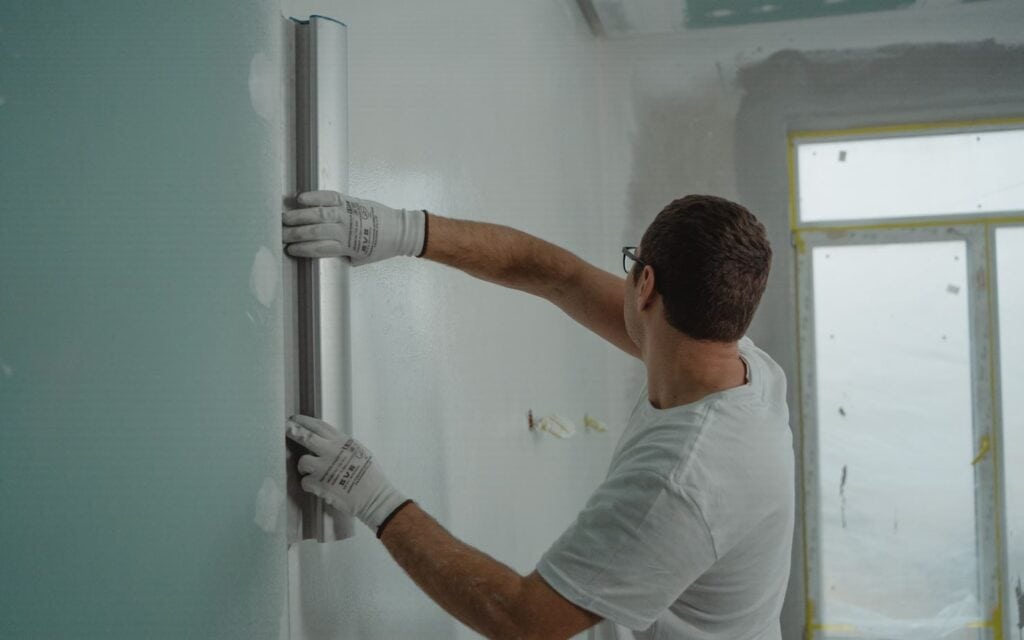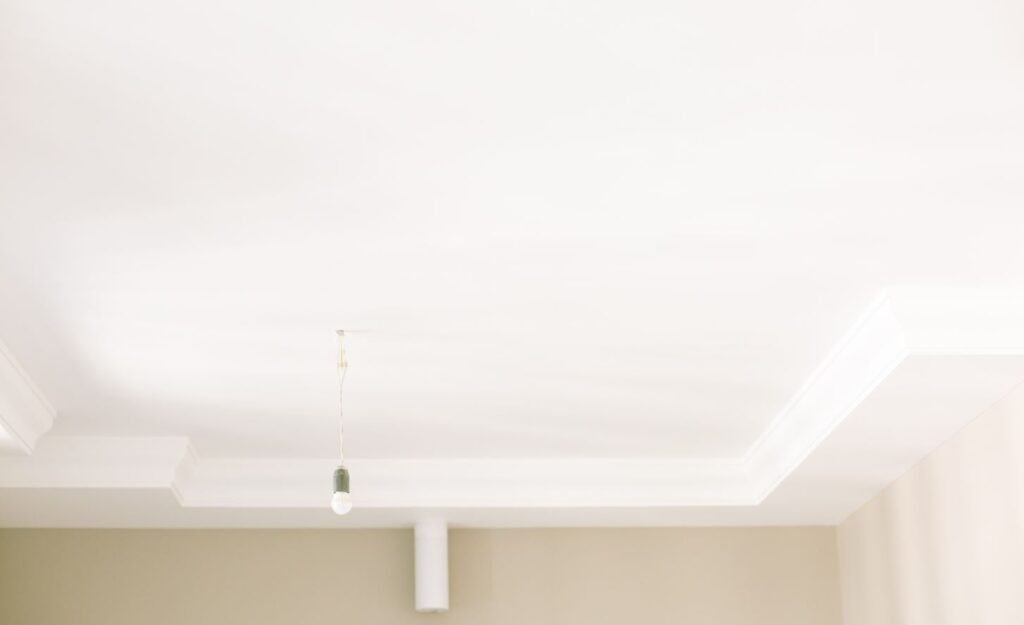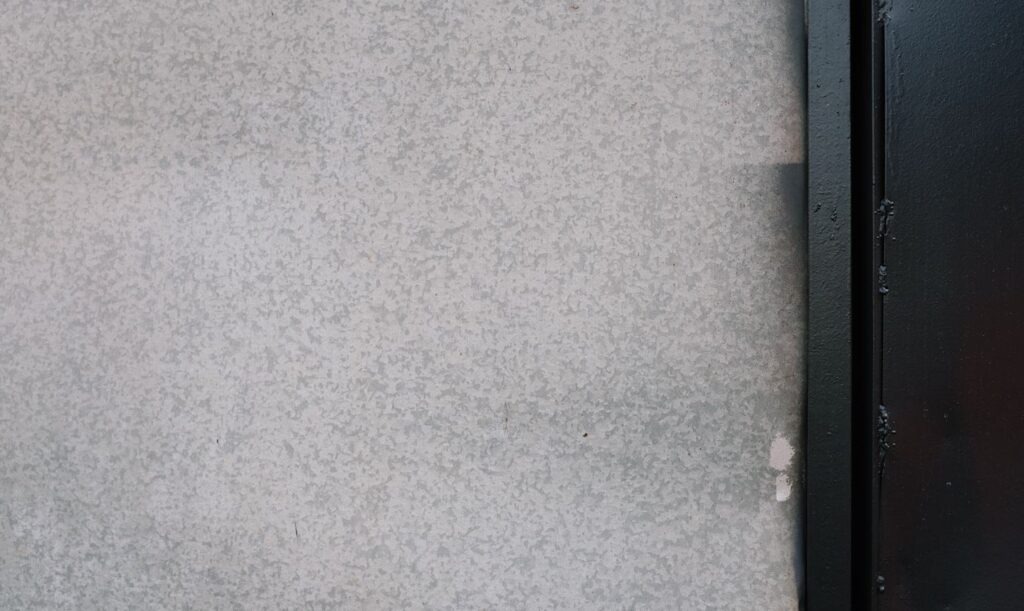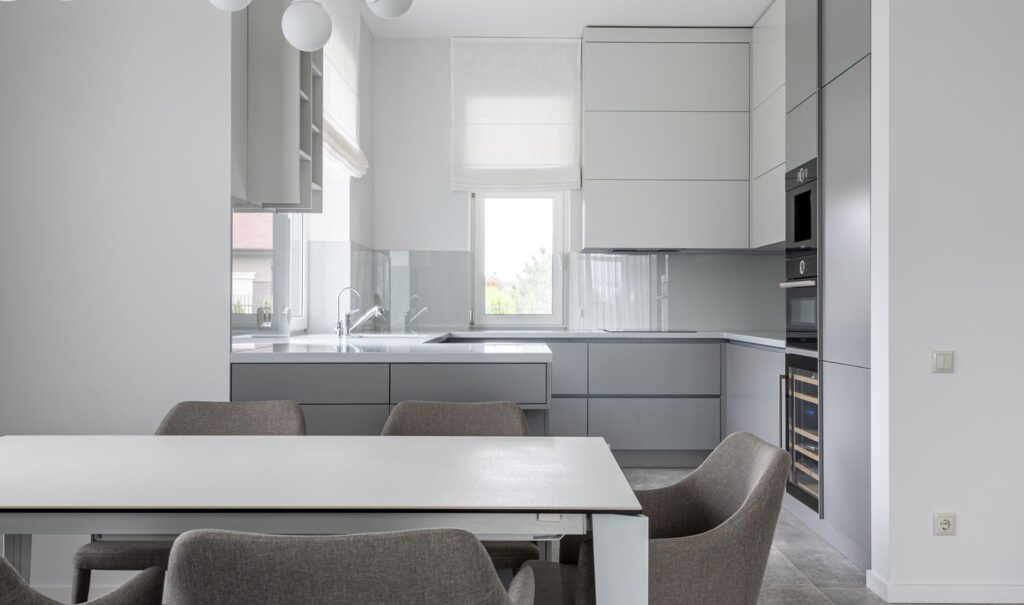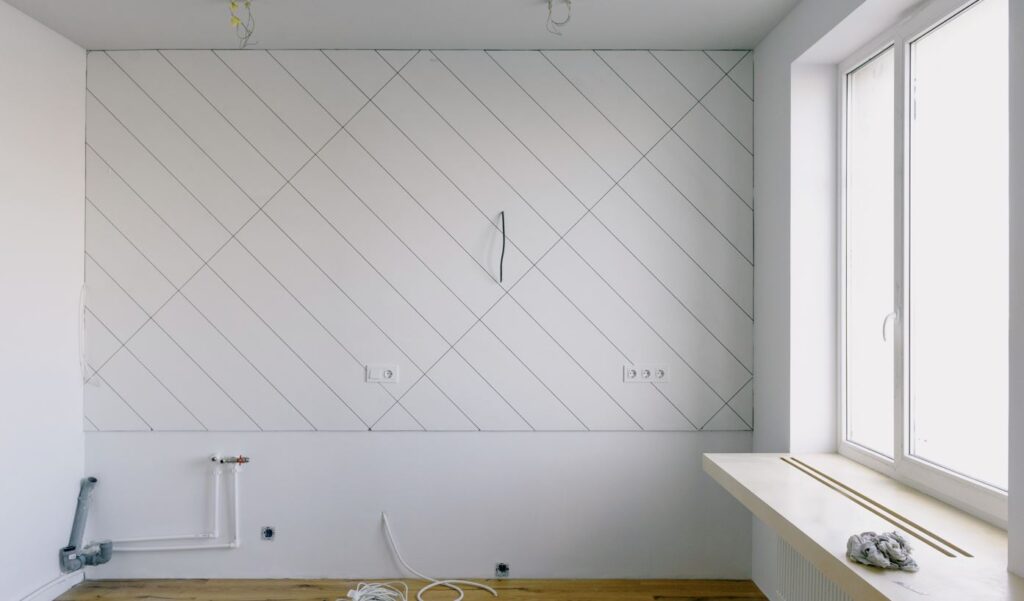Plaster's versatility as a building material has been used for ages to strengthen and beautify various surfaces. But why would you want to plaster something? The answer to this question is foundational to grasping plaster's importance in building and remodelling.
Plaster covers walls, ceilings, and other surfaces to make them look uniform and smooth. Plaster's protective coating prevents the internal mechanism from deteriorating due to water, heat, and impact.
Moreover, plaster can hide flaws like cracks and unevenness while leaving a smooth and sophisticated appearance. It also serves as a soundproofing mechanism, keeping unwanted sounds from seeping into adjacent rooms.
In addition, plaster provides a blank slate for various embellishments, whether paint, wallpaper, or texture. Plaster is still used in the construction and design industries, serving practical and aesthetic purposes in projects ranging from historical restorations to cutting-edge architectural creations.
Plaster's Purpose And Advantages
The building trade has undergone more revolutionary changes recently than at any other time in history. There has been an uptick in the development of tools, techniques, and innovations that make the entire building process more efficient and reliable. Plastering is one example of such a method.
Plaster is a smoothing coating used on walls, ceilings, and sometimes other materials. Lime, gypsum, and cement are common ingredients. Manufacturers of gypsum plaster can be located and purchased from. It's in powder form. It is applied after being blended with water. It hardens and dries out rapidly. The many benefits it offers have led to its widespread adoption.
Improving Surface Appearance
Plastering is an excellent way to boost the aesthetic value of a surface. Plaster's flawless appearance can improve the aesthetic value of whatever surface it's applied to. Let's look at how plaster can improve the visual appeal of a room's finish.
Plaster's adaptability in the realm of aesthetics is undeniable. The ability to tint or paint it in various colours makes it adaptable to different aesthetic goals. Plaster can be shaped to create either a striking visual statement or a refined and understated atmosphere.
Plaster's texture can be changed for a variety of artistic effects. Plaster's versatility means it may create a wide range of looks, from smooth and polished to textured and patterned. Its adaptability permits the development of exotic and visually interesting settings.
Plaster also offers a smooth and consistent finish. It can be applied throughout layers and layers, so flaws in the material surface can be covered up and made uniform. Plaster evens out rough spots to produce a finished product that is unified and aesthetically beautiful.
Plaster's capacity to improve the interplay of shadows and light is an additional benefit. Plaster's glossy finish reflects light in a way that creates the illusion of depth and space. When combined with careful lighting planning, this effect can create a distinctive and compelling ambience.
Plaster is also aesthetically pleasing since it seems old and antique. Its aesthetic significance has been recognised for decades, as seen by its continued use in building and interior design. Plaster's versatility means it may be used in both classic and modern interiors, where it will add a refined touch.
Plastering is a great technique to improve the aesthetics of your walls, ceilings, and other surfaces. Interior designers frequently use it since it is easy to work with and produces beautiful results. Plaster is versatile enough to create a beautiful atmosphere in any style, whether modern, rustic, or traditional.
Offering Durability And Protection
Plaster is often used to make surfaces more resilient and resistant to wear and tear. Plaster provides a strong and resilient barrier that prevents damage to walls, ceilings, and other surfaces. Let's explore how plaster protects and helps surfaces survive a long time.
Plaster's primary function is to prevent moisture from penetrating the surface. Significant damage, such as mould development, decay, and deterioration, can be caused by building moisture infiltration. When put correctly, plaster creates a barrier that stops water from penetrating the underlying surface. The surface's durability is increased by its resistance to moisture.
Plaster is also resistant to physical damage and impact. Accidental impacts can cause damage to walls and ceilings. Plaster functions as a buffer, soaking up impact energy and protecting surfaces from harm. This is of paramount significance in places like schools, hospitals, and workplaces where the potential for injury is considerable.
As a bonus, plaster makes surfaces tougher and more scratch-proof. It improves the durability of walls and roofs, making them better able to withstand the wear and tear of regular use and the elements. Plaster provides a strong and durable coating, extending the life of surfaces and minimising the frequency of maintenance and replacement.
Plaster not only shields against harm but also from flames. Plaster has a natural resistance to fire and functions as a barrier to slow the spread of flames while exposed to high temperatures. This essential quality buys precious time in a fire, allowing residents to exit the structure safely. It aids fire suppression and damage control, increasing the building's stability.
Plaster has a well-deserved reputation for being pest-proof. It makes a smooth, impervious surface harder for pests like termites to penetrate. Plaster aids in protecting the building's structural integrity and decreases the likelihood of damage from pests by sealing off any potential entry points in the walls or ceiling.
Furthermore, plaster can be used to dampen noise. It lessens the amount of outside noise that can be heard within a building. This is especially useful in places where privacy and quiet are paramount, such as apartments, hotels, and workplaces.
Lastly, plaster helps make a home healthier for those who live there. Due to its smooth & non-porous surface, dust, allergies, and pollutants are less likely to accumulate over time. Those who suffer from asthma or allergies will benefit greatly from this. Plaster can also prevent the spread of mould and mildew, which might weaken surfaces and pose health risks to anyone living or working on them.
Plastering is a crucial protective measure since it increases a surface's resilience and longevity. Plaster is essential to the longevity and structural integrity of buildings because it protects against moisture & physical damage, as well as fire resistance & acoustic insulation. Its resistance to a wide range of contaminants means that surfaces will last for years while looking great.
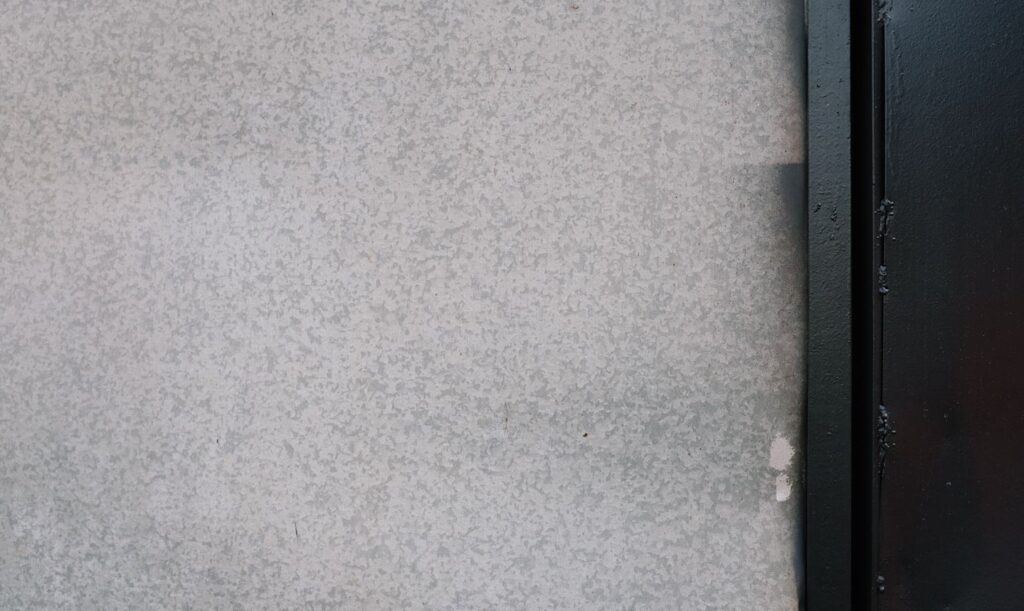
Building A Smooth And Even Surface
Plaster is typically used to make surfaces uniform in texture and appearance. Plastering is applying a specially formulated mixture to walls, ceilings, and some other surfaces to create a smooth, even finish. Let's talk about why it's so important to plaster everything to a uniform smoothness.
An equal and smooth surface improves the visual appeal of any given area. A very well-plastering job may greatly improve the aesthetic appeal of any structure, whether it's a private residence, a public building, or maybe an interior decorating project. The plastered surface, with its regularity and smoothness, contributes to an air of professionalism and sophistication.
A smooth finish is also great for use as a foundation for additional embellishments. A smooth plastered surface guarantees a faultless and professional outcome when painting, wallpapering, or applying other decorative treatments. Without a uniform foundation, flaws and irregularities in the substrate surface will stand out more and detract from the overall aesthetic value of the finished product.
The structural stability of the surface is also greatly aided by achieving a smooth but even finish. Plaster is a barrier, providing rigidity and support to the underlying structure. Little flaws in the foundation can be hidden with a smooth coat of plaster, making the surface stronger and more aesthetically acceptable overall.
Having a uniform surface also makes it simpler to clean and maintain. Plastering creates a smooth, non-porous surface less likely to collect dirt and filth. Because of this, cleaning is quick and easy. It keeps the surface clean and clear of allergies, making the space where you live or work healthier for everyone.
Light is better reflected and dispersed when the surface is smooth. A plastered wall has a homogeneous texture, so when light hits it, it reflects and casts interesting shadows. This effect can increase the room's overall luminosity and make it feel more open and airy.
A smooth surface is more practical since it prevents snagging or catching. Rough or uneven floors can harm or snag clothing, furniture, and other items. A plastered surface takes care of these issues, making life in the room easy and pleasant.
Finally, the life of the surface is enhanced by a smooth finish. Plastering helps avoid cracks and structural problems by removing any bumps or uneven areas that may otherwise compromise the building. This decreases the frequency of repairs and maintenance and increases the surface's longevity.
Plastering has many uses, the most obvious being creating a uniform surface. A smooth plastered surface is important for various reasons, including improving the visual appeal and serving as a foundation for other ornamental treatments, protecting the structure, and making routine maintenance less of a chore. It enhances the class and professionalism of any setting while also increasing its durability and usefulness.
Imperfection Covering
Plaster's ability to hide surface flaws is a major benefit when applied. Walls and ceilings with flaws like cracks, holes, & uneven patches look unappealing and take away from the room's aesthetic value. Plastering provides a smooth and uniform surface, effectively masking these imperfections. Let's discuss why plastering is important and what it can do for you.
In the first place, hiding flaws makes surfaces look better overall. Disarray, as well as the impression that neglect or poor craftsmanship can result from cracks, holes, or uneven sections. When the plaster is applied, it covers up the flaws and creates a smooth, attractive surface. Plastering a surface makes it look sleek and professional because of how evenly it coats the surface.
In addition, hiding flaws helps produce an overall impression of completion and gloss. Plastering adds a finishing touch to any room, whether a private residence, a workplace, or a public establishment. It makes the space look neat and put together, which will impress any guests or new residents.
Concealing flaws serves a functional purpose and improves a surface's appearance. Holes and cracks can weaken a structure, making it more vulnerable to future damage or degradation.
Plastering not only covers up these flaws but also strengthens the surface, making it much more sturdy and reliable. Plastering can be used to repair and reinforce the surface of older or otherwise damaged buildings and structures.
Also, smoothing out the surface by hiding flaws makes it easier to apply following treatments or finishes. A perfectly smooth and level plastered surface is essential for any finishing project, whether painting, wallpapering, or applying decorative coatings. Imperfections, if not concealed, may become more obvious when finishing touches have been added.
Plastering is a reliable method for producing a uniform and smooth coating. The placement of furniture and artwork may need to be adjusted if the floor is not uniform across the room. Plastering hides flaws, making the surface homogeneous so that furniture and decorations may be placed more strategically to create an aesthetic balance.
Plastering over flaws has the added benefit of making surfaces more hygienic and spotless. Uneven surfaces are more likely to accumulate dust and filth, making maintenance a chore. Plastering makes for an easy-to-care-for, smooth, nonporous surface. It helps keep the air in your home or office cleaner and free of allergens and pollution.
Finally, concealing flaws can help stop them from getting worse. Cracks or holes that aren't repaired quickly can spread and cause more, more expensive damage. Plastering over these flaws protects the underlying surfaces, preventing further wear and tear and extending the building's lifespan.
Plastering over flaws has some advantages. The structural integrity of an underlying material is enhanced while the aesthetic value of the surface is enhanced. In addition to these benefits, it provides an equal surface for following treatments, improves hygiene, and retards additional damage. Plastering is an efficient method for covering flaws and making a surface more aesthetically pleasing and long-lasting.
Frequently Asked Questions About Plastering
Yes, plaster can be applied to various surfaces, such as concrete, brick, drywall, and wood. However, proper surface preparation is essential to ensure proper adhesion and longevity.
The drying time of plaster depends on several factors, including temperature, humidity, and thickness. Typically, it takes 24 to 48 hours for the plaster to dry completely.
Yes, plaster can be repaired if it gets damaged. Minor cracks or chips can be patched and blended seamlessly with plaster. Larger damages may require more extensive repair work.
Plaster is considered environmentally friendly as it is a natural material that can be recycled and reused. It does not release harmful chemicals into the environment.
While plaster is primarily used for interior applications, certain types of plaster, such as exterior stucco, are suitable for outdoor use. These plasters are designed to withstand the elements and protect exterior surfaces.
Insulation And Soundproofing
When designing a functional and pleasant living or working area, soundproofing and insulation should be high on your list of priorities. Plaster's insulating and soundproofing qualities can make a big difference. Let's take a look at why it's so crucial to insulate and soundproof your walls with plaster.
Soundproofing
Plastering's capacity to dampen sound, both within a room and from outside, is a major perk. The importance of soundproofing cannot be overstated in settings where seclusion, focus, and peace are prioritised. Soundproofing can be achieved with plaster in the following ways:
- Noise Reduction: Plaster prevents noise from penetrating walls and ceilings because it is a dampening material for vibrational sound. It lessens the noise, making for a calmer and more relaxed environment.
- Improved Acoustic Control: A room's acoustics may be improved with plaster. Plastered walls and ceilings improve the acoustic environment by dampening echo and reverberation. This is of utmost significance in auditoriums, recording studios, and boardrooms.
- Privacy Enhancement: Plastering helps keep discussions and other noises private by reducing echo. It keeps any in-room talks or activities private and free from interruptions.
- Noise Isolation: Plastering can prevent sound from travelling through walls and between floors in a structure. This is helpful anywhere noise and privacy are concerned, especially in hotels and workplaces with multiple rooms or units.
Insulation
Plastering not only helps with soundproofing but also helps with thermal insulation, which means less wasted energy and more pleasant temperatures inside.
- Temperature Regulation: Plaster can serve as a heat insulator to lessen the energy lost or gained by a structure's walls. It reduces the necessity of excessive cooling or heating by keeping interior spaces cooler during hot climes and warmer for cold climates.
- Energy Efficiency: Plastering provides insulation, which decreases the need for cooling and heating systems and consequently results in energy savings & lower utility bills. It makes for a greener and more sustainable place to live or work.
- Comfort Enhancement: Plastering provides insulation, which reduces temperature swings and draughts, making the indoor atmosphere more pleasant. It aids in keeping the indoor temperature stable and comfortable throughout the year.
- Condensation Prevention: Plastering can aid in avoiding condensation problems by establishing a moisture-resistant barrier. Mould development and structural damage are two outcomes of condensation that can't be avoided. Plastering correctly decreases the likelihood of condensation-related issues, making for a healthier and cleaner environment at home or in the workplace.
Plastering has great insulating and soundproofing properties. It helps with acoustic regulation, privacy, and reducing outside noise. Plastering also helps with thermal insulation, which keeps interior temperatures consistent and reduces heating and cooling costs. Plastering's soundproofing and insulating features make buildings cosier, quieter, and more cost-effective.
Fire Resistance
The prevention of fires during construction and use of buildings is paramount. Plastering can greatly improve a building's fire resistance, which is of great value in protecting both the building and its inhabitants. Let's look into the value of fireproof plaster and the advantages it offers.
- Fire Containment: Plaster can be used as a barrier to keep flames confined to a certain area or room. When there's a fire, the walls that have been plastered serve as fire barriers, keeping the blaze contained. Its containment buys precious time for evacuating residents and responding to emergency personnel.
- Flame Retardancy: Materials used for plastering have a natural resistance to fire. They are made out of fireproof materials that won't catch fire easily. Plaster doesn't melt or char when heated, so it won't fuel the fire if it becomes too hot.
- Heat Insulation: The insulating characteristics of plaster help to keep the fire from spreading further into the building. This insulation prevents the structural components from overheating, extending their useful life. That buys precious time that can be used for escape and firefighting.
- Protection of Structural Integrity: The safety of anyone within a structure may be compromised if a fire damages its framework. When applied to load-bearing walls or columns, plaster provides an extra barrier against damage. It keeps them strong and stable, making them less likely to fall into a fire.
- Smoke Control: Plastering not only helps prevent fires, but it can also reduce smoke. Plaster creates a barrier that reduces smoke's ability to spread to nearby rooms, which in turn reduces the spread of poisonous gases and increases the likelihood that everyone may safely evacuate.
- Building Code Compliance: Building codes & regulations necessitate fire safety features. Meeting these needs and maintaining safety regulations is where plastering comes in. It is more likely that a building will pass a fire safety inspection if it has a fire-resistant plastering system installed.
- Peace of Mind: Plastering that can withstand fire is reassuring to building occupants. People feel more secure in their immediate surroundings when they know the building was built with fire prevention in mind. It helps people feel safer and lessens their anxiety about fires.
Plastering fire-resistant is crucial for the security of buildings and their inhabitants. Plaster can prevent the spread of fire, insulate against heat, and preserve the integrity of buildings. Plastics that comply with fire safety norms and standards
Hygiene And Health
When designing and constructing a structure, health and sanitation must take precedence. There are several reasons why plastering is so important to maintaining a clean and safe environment. Let's take a look at the benefits of plastering and how they relate to our health and cleanliness.
- Smooth and Non-Porous Surface: Plastering produces a finished surface that is both smooth and nonporous, making it simple to keep clean. Plastered ceilings and walls don't collect dust, filth, or allergens like textured or rough surfaces. A safer and more nutritious place to live or work is the result.
- Prevention of Mould and Mildew: Mildew and mould, which thrive in damp environments, pose a threat to human health and negatively impact the quality of indoor air. Plastering creates a barrier against moisture invasion, reducing the likelihood of mould and mildew formation. Because of this, fewer people will experience difficulty breathing or developing allergies.
- Sanitation and Disinfection: Plastering makes for an easily cleaned and germ-free surface. This is paramount in sanitary settings, including kitchens, labs, and hospitals. Plastered walls and ceilings are more hygienic since they are smooth and do not absorb moisture like porous materials.
- Reduction of Allergens: Allergens, including dust mites, pollen, and pet dander, can be reduced in the home through the plastering process. Very sensitive people may experience allergic responses or respiratory issues when exposed to these allergens. Plastering helps to improve indoor air quality by producing a clean and smooth surface.
- Maintenance of Indoor Air Quality: Plastered walls and ceilings can help keep indoor air clean. Plastering helps keep the air clean and healthy by minimising the buildup of dust, allergies, and pollutants. Those with respiratory issues or easily irritated by airborne particles can benefit greatly.
- Resistance to Stains and Odors: Plastered surfaces are less susceptible to smells and stains than porous ones. This is of utmost significance in moist or smelly environments like kitchens and bathrooms. Plastered surfaces are non-porous, making them easy to clean and keep odour-free, leading to a more sanitary and pleasant setting.
- Long-Term Durability: Plastering makes surfaces more long-lasting and sturdy. Plastered surfaces, if cared for properly, can last for decades while other materials corrode or decay. This keeps the environment more stable and minimises the frequency with which it needs to be renovated or replaced.
- Aesthetics and Psychological Well-being: Plastering surfaces can improve mental health simply because of their aesthetic value. The maintenance and improvement of one's physical surroundings can have a positive effect on one's emotional and mental health. Plastering helps make a room look nice, boosting people's moods.
Plastering is an essential component in creating safe and clean indoor spaces. It provides a flat, nonporous surface resistant to mould, allergies, stains, and odours and is simple to clean. As a result of plastering, indoor air quality is enhanced, and the likelihood of developing asthma or allergies is decreased. Surfaces' longevity and beauty are improved. As a result, making for an environment conducive to health and cleanliness.
Conclusion
For generations, people have turned to plaster for its strength and aesthetic benefits in construction. Powdered lime, gypsum, and cement are mixed with water to create a smoothing coating that is then applied. Plaster's adaptability makes it possible to achieve a variety of finishes, from sleek and refined to rough and intricate. It has a uniform and smooth surface that works well in both traditional and contemporary settings.
Plastering is an effective method for enhancing the visual appeal of surfaces while also providing protection and durability. It makes the surface more durable by blocking moisture absorption. It also serves as a buffer, absorbing impact energy to prevent damage to nearby surfaces. Plaster is also harder and more scratch-proof, making it more resilient to everyday use and environmental factors.
Plaster's inherent fireproofing makes it less easy for wood-destroying insects like termites to invade and safeguards the building's stability. It helps reduce noise, making it an excellent choice for places where peace and quiet are paramount. Asthma and allergy sufferers can also benefit from plaster's ability to cut down on dust and other allergens and pollutants in the home.
Plastering, in conclusion, is an essential preventative action that greatly improves the durability and endurance of a surface. It is crucial for producing a flat and uniform surface, which enhances the aesthetic value of any given area and adds a touch of professionalism and sophistication. Since defects and irregularities in the substrate surface can diminish the overall aesthetic value of the finished product, plastering is vital for a smooth and professional end in a variety of building and design projects. Plastering is essential for making a flat, level surface that adds strength to the underlying structure. It strengthens the surface and improves its aesthetic appeal by adding stiffness and stability to the underlying structure.
In addition to reducing the likelihood of dirt and grime accumulation, plastering facilitates cleaning and maintenance. There will be less potential for clutter and snagging with a smooth surface. In addition to extending the life of a surface and making it less prone to cracks and other structural issues, plastering smoothes over any bumps or uneven spots that could otherwise cause damage.
Plastering also helps hide imperfections. Plastering may cover up blemishes and make a room look more polished and professional. It's practical, too, because it hides imperfections and makes everything look cleaner and healthier. Plastering over damage saves the underlying surfaces from further wear and tear, which in turn increases the lifespan of the building.
Having proper insulation and soundproofing in place is crucial for any living or working space. The insulating and soundproofing properties of plastering can make a huge impact on the quality of a space. Reduced noise levels, improved acoustic control, increased privacy, better noise isolation, better insulation, lower energy costs, more comfort, and no condensation are all benefits of soundproofing. Plastering not only aids in soundproofing but also makes for a more comfortable and eco-friendly home or workplace. Plastering provides a smooth, nonporous surface that is resistant to mould, allergens, stains, and odours, making it an essential part of creating safe and hygienic indoor spaces.
Its insulating and soundproofing qualities make homes and businesses more comfortable, peaceful, and economical. In addition to its obvious aesthetic value, plastering serves an important function in terms of safety and health, as well as fire and smoke control, structural integrity protection, heat insulation, structural integrity protection, smoke control, and code compliance. Plastering creates a surface that is both smooth and nonporous, making it simple to keep clean. Improved indoor air quality is another benefit of preventing mould and mildew growth. Plastering is more hygienic in institutional environments because it decreases allergens.
Those with respiratory disorders or who are easily bothered by airborne particles may appreciate the fact that plastering aids in maintaining indoor air quality by minimising dust, allergens, and pollution. Plastering makes surfaces less porous. Thus they are easier to keep clean and fresh-smelling than porous ones. Plastering is more stable and less prone to corrosion or decay than other materials, thus it requires less maintenance and fewer replacements over time. Plastering improves not only the room's physical appearance but also the occupants' state of mind. Plastering is an important part of maintaining a clean and safe environment that is conducive to human comfort and health.
Content Summary
- Plaster is a versatile building material that has been used for ages to strengthen and beautify surfaces.
- Plaster covers walls, ceilings, and other surfaces to create a uniform and smooth appearance.
- It protects surfaces from water, heat, and impact.
- Plaster can hide flaws like cracks and unevenness, leaving a smooth and sophisticated finish.
- It serves as a soundproofing mechanism, reducing unwanted noise transmission.
- Plaster provides a blank canvas for various embellishments like paint, wallpaper, or texture.
- It is used in both historical restorations and modern architectural projects.
- Plastering is a method that has undergone revolutionary changes, making the building process more efficient and reliable.
- Lime, gypsum, and cement are common ingredients in plaster.
- Gypsum plaster can be purchased from various manufacturers.
- Plaster is applied in powder form and hardens and dries quickly when mixed with water.
- It improves the appearance of surfaces, boosting their aesthetic value.
- Plaster can be tinted or painted in different colours to achieve various aesthetic goals.
- It can be shaped to create striking visual statements or understated atmospheres.
- Plaster's texture can be adjusted to create a wide range of artistic effects.
- It provides a smooth and consistent finish, covering up rough spots and creating a unified appearance.
- Plaster enhances the interplay of shadows and light, creating a distinctive ambience.
- Plaster has an old and antique aesthetic, suitable for both classic and modern interiors.
- It is frequently used by interior designers for its ease of use and beautiful results.
- Plastering improves the aesthetics of walls, ceilings, and other surfaces in any style.
- Plaster makes surfaces more resilient and resistant to wear and tear.
- It creates a strong and resilient barrier against damage.
- Plaster prevents moisture from penetrating the surface, reducing the risk of decay and deterioration.
- It absorbs impact energy, protecting walls and ceilings from accidental damage.
- Plaster makes surfaces tougher and more scratch-proof, extending their durability.
- It has a natural resistance to fire, slowing down the spread of flames.
- Plaster prevents pests like termites from penetrating surfaces, protecting the building's structural integrity.
- Plaster dampens noise, reducing the amount of outside sound that can be heard within a building.
- It creates a healthier environment by preventing the accumulation of dust, allergies, and pollutants.
- Plaster prevents the spread of mould and mildew, reducing health risks.
- Plastering increases a surface's resilience and longevity.
- Plastering creates a uniform and smooth finish, improving the visual appeal of any area.
- A smooth surface provides a flawless foundation for additional decorative treatments.
- Plaster enhances the structural stability of surfaces, making them stronger and more reliable.
- Cleaning and maintenance are easier on smooth and non-porous plastered surfaces.
- Light is better reflected and dispersed on smooth plastered walls, creating a brighter atmosphere.
- A smooth surface prevents snagging or catching on rough or uneven areas.
- Plastering reduces the likelihood of cracks and structural problems, increasing the surface's lifespan.
- Plastering provides a smooth and uniform finish, hiding surface flaws.
- It improves the aesthetic appeal of surfaces, making them sleek and professional.
- Hiding flaws contributes to an overall impression of completion and gloss.
- Concealing flaws improves a surface's functionality and appearance.
- Plastering strengthens the surface, making it more sturdy and reliable.
- Concealing flaws creates a better foundation for applying finishing treatments or embellishments.
- Plastering makes surfaces more hygienic and easier to clean.
- It helps prevent the growth of mould and mildew, improving indoor air quality.
- Plastered surfaces reduce the accumulation of allergens, creating a healthier environment.
- Plastering reduces maintenance and makes surfaces more resistant to stains and odours.
- Plastered surfaces are durable and long-lasting, reducing the frequency of renovations or replacements.
- Plastering enhances the aesthetics and psychological well-being of individuals by creating visually pleasing surroundings.


